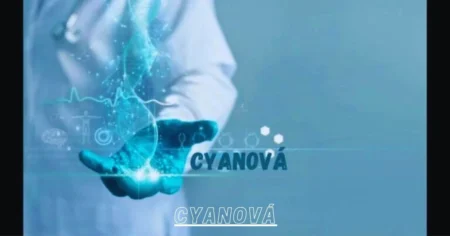Antibiotics have played a crucial role in medicine for decades, drastically reducing mortality from bacterial infections. While many antibiotics, such as penicillin and amoxicillin, have been extensively studied and used worldwide, the hypothetical antibiotic “Samocillin” offers a new perspective. Though Samocillin does not currently exist in medical literature, we can explore its potential mechanisms, usage, development, and impact in the context of modern medicine. This essay delves into the conceptual framework of Samocillin, exploring what makes it a promising candidate for the next generation of antibiotics.
The Hypothetical Nature of Samocillin: A Conceptual Foundation
Samocillin, for the sake of this essay, can be imagined as a novel antibiotic developed to tackle a broad spectrum of bacterial infections. The increasing emergence of antibiotic-resistant strains has driven the medical and pharmaceutical industries to explore new options. Samocillin could be the result of cutting-edge biotechnological advancements, designed specifically to be effective where conventional antibiotics have failed.
With antibiotic resistance as one of the most pressing global health concerns, Samocillin represents a new hope. Unlike existing antibiotics that target cell wall synthesis or protein production, Samocillin could theoretically function through a unique mechanism, such as disrupting bacterial communication (quorum sensing) or inhibiting biofilm formation, making it especially effective against resistant strains like Methicillin-resistant Staphylococcus aureus (MRSA) and Clostridium difficile.
Mechanism of Action: How Samocillin Works
Assuming Samocillin is part of a new class of antibiotics, its mechanism of action could differ significantly from traditional drugs like beta-lactams or macrolides. Current antibiotics typically work by:
- Inhibiting cell wall synthesis (penicillins, cephalosporins)
- Disrupting protein synthesis (tetracyclines, aminoglycosides)
- Interfering with DNA replication (quinolones)
- Blocking metabolic pathways (sulfonamides)
For Samocillin, we could propose a dual-action approach. One part of its mechanism might involve binding to a novel bacterial target, such as a protein crucial for bacterial motility or a molecule necessary for bacterial communication (quorum sensing). This disruption would prevent bacteria from coordinating attacks on the host organism, reducing their virulence and making them more susceptible to immune response and existing treatments.
The second part of Samocillin’s action could involve inhibiting biofilm formation, a key factor in the persistence of many chronic bacterial infections. Biofilms act as protective layers that shield bacteria from antibiotics and the immune system. By preventing biofilm formation, Samocillin could make bacterial colonies more vulnerable to both immune defenses and other therapeutic agents.
The Role of Samocillin in Combating Antibiotic Resistance
Antibiotic resistance is a phenomenon where bacteria evolve mechanisms to survive exposure to antibiotics that would usually kill them. This problem has led to a dramatic increase in untreatable bacterial infections, raising the urgency to develop new drugs like Samocillin. One of the biggest challenges in fighting antibiotic resistance is that bacteria can quickly adapt, either through genetic mutations or by acquiring resistance genes from other bacteria.
To counteract this, Samocillin could be designed with a low potential for resistance development. One way to achieve this would be to target bacterial processes that are less likely to mutate without causing significant damage to the bacteria themselves. For instance, targeting bacterial communication systems (quorum sensing) or biofilm formation would make it harder for bacteria to evolve resistance because these processes are essential to bacterial survival in a community context, but are not easily modifiable.
Samocillin’s proposed dual-action mechanism could further slow resistance development, as bacteria would need to simultaneously evolve countermeasures to both actions—a much more difficult task compared to evolving resistance against a single mechanism.
Potential Clinical Applications of Samocillin
If Samocillin were to become a reality, its application in clinical settings could be vast. Hospitals worldwide are struggling with infections caused by multidrug-resistant organisms, especially in intensive care units (ICUs), surgical wards, and among immunocompromised patients. Samocillin could be used in a variety of infections, including:
- Skin and Soft Tissue Infections (SSTIs): MRSA and other resistant organisms often cause complicated skin infections that are difficult to treat. Samocillin’s biofilm inhibition capabilities could make it highly effective in these scenarios.
- Respiratory Infections: Bacterial pneumonia, especially when caused by resistant pathogens like Pseudomonas aeruginosa or Acinetobacter baumannii, could be effectively treated by Samocillin.
- Urinary Tract Infections (UTIs): Resistant E. coli and Klebsiella species are common culprits in recurrent UTIs, and Samocillin’s ability to prevent biofilm formation might reduce the occurrence of chronic UTIs.
- Post-Surgical Infections: The prevention and treatment of infections following surgery, particularly in orthopedic or cardiovascular procedures where prosthetic materials are used, could be greatly enhanced by an antibiotic like Samocillin.
Development Challenges: Bringing Samocillin to Market
Although the conceptual framework of Samocillin offers immense promise, the path to its development would not be straightforward. The pharmaceutical industry faces several significant challenges when developing new antibiotics, including:
- High Research and Development Costs: Developing a novel antibiotic requires years of research, clinical trials, and significant financial investment. For Samocillin to reach the market, it would need to demonstrate superiority over existing treatments in terms of efficacy, safety, and resistance prevention.
- Regulatory Hurdles: Approval from regulatory agencies like the FDA or EMA requires rigorous testing to ensure a new drug’s safety and efficacy. Antibiotics that work through unique mechanisms, like Samocillin, would need to undergo additional scrutiny to ensure they don’t cause unintended effects, such as harming beneficial bacteria in the microbiome.
- Market Viability: Antibiotics, unlike drugs for chronic conditions, are often used for short courses, making them less profitable for pharmaceutical companies. Incentives such as government funding, public-private partnerships, or extended patent protections might be necessary to bring a new antibiotic like Samocillin to market.
Ethical Considerations: Responsible Use of Samocillin
The introduction of any new antibiotic, including a theoretical one like Samocillin, must be accompanied by guidelines for its responsible use. Antibiotic stewardship programs aim to limit the inappropriate use of antibiotics to prevent the rapid emergence of resistance. For Samocillin, this would mean strict controls on its prescription, ensuring it is only used when absolutely necessary and in the appropriate dosages.
Overprescription of antibiotics is one of the leading causes of resistance. The availability of Samocillin would need to be closely monitored to prevent it from being used as a first-line treatment for minor infections, reserving its use for cases where other treatments have failed or where resistance is a known issue.
Conclusion
The emergence of antibiotic-resistant bacteria has created an urgent need for new treatments. While Samocillin remains a conceptual antibiotic, its proposed dual-action mechanism and broad-spectrum application represent the kind of innovation needed in the fight against resistant bacteria. The challenges of developing such a drug are significant, but the potential rewards, both in terms of public health and medical advancement, are even greater. Should Samocillin or similar antibiotics become a reality, they could revolutionize the way bacterial infections are treated and help us stay ahead in the ongoing battle against resistance.
Read More: CW Park USC: History, Design, and Features







